Introducing: First Peoples of the Methow Map
This informational map was produced to provide an introduction to the Methow Valley and its First People.
Over ten thousand years ago, the Methow Valley was covered in glaciers up to a mile thick, the tallest peaks in a sea of ice. As the ice receded, the First People settled throughout the Methow Valley, where food and cultural resources were available. They established several trails and trade routes and traded goods with the coastal and plains regions.
Their descendants, the Methow, continue to live in this region, teaching and practicing cultural traditions passed down through hundreds of generations.
Users are encouraged to walk the trails and visit the interpretive sites noted on the map. Please respect the land and personal property. Do not disturb archaeological sites. Leave only footprints, take only memories.
Visit the Methow Valley Interpretive Center for an in-depth experience of the unique geology and natural history of the Methow Valley, and the pre-European native inhabitants.
Located on the TwispWorks Campus, 210 5th Ave, Twisp
Interpretive Signs and Trails:
Methow Monument in Pateros
Located along the shoreline of the Columbia River, the Methow Monument educational park recognizes the Methow’s role in shaping this community from past to present. The monument portrays a day in the life of people who lived in this large permanent settlement prior to European explorers. Sculptures by Virgil “Smoker” Marchand portray a traditional salmon harvest. Visitors can enjoy a scenic view of the Columbia river framed by native plants, a pictograph tiled ADA sidewalk, five interpretive signs, and a 14 foot canvas teepee that provides a shady place for children to play. Follow the river trail to the Pateros Museum located in city hall for even more opportunities to learn about the people who lived here.
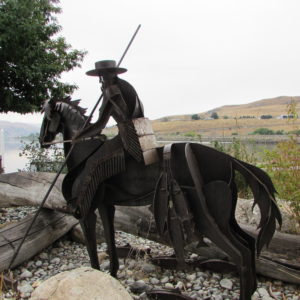
https://www.pateros.com/index.php/history/pateros-museum/
McFarland Creek River Access
A traditional fishing site, this public fishing access point also offers views of unique glacial activity
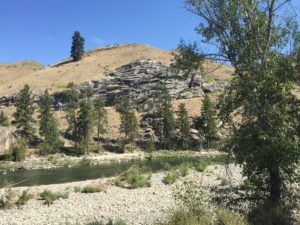
Coyote
“Coyote turns his canoe over and walks from here,” is the story behind this stunning geographical feature. This land is private property, no trespassing.
“Coyote was the subject of Native American Creation Stories told over and over, and handed down from generation to generation. He was put to work by the Spirit Chief to prepare the world for the coming of real people. When he was not busy for the Spirit Chief, he amused himself by getting into mischief and stirring up trouble. One of the most famous stories involves Coyote bringing salmon up the Columbia River and its tributaries.” from Coyote Stories by Mourning Dove Christine Quintasket
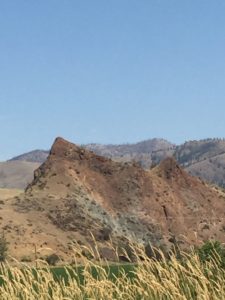
Methow Valley Interpretive Center and Native Plant Gardens
In the heart of the town of Twisp, the Methow Valley Interpretive Center and Native Plant Gardens provides visitors the opportunity to explore the unique geology of the Methow Valley and learn more about the first inhabitants. Interactive exhibits and the walkable native plant gardens provide an engaging experience.
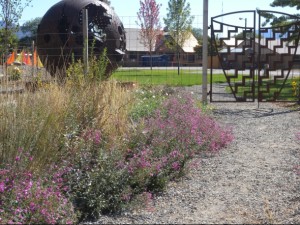
http://www.methowvalleyinterpretivecenter.com
Twisp Ponds Discovery Center
Located a half mile west of Twisp on Twisp River Road, the Twisp Ponds Discovery Center is a network of streams and rearing ponds with easy walking trails. Whimsical artwork and interpretive stations celebrate steelhead trout, spring Chinook salmon, and coho salmon. Walking trails lined with willow, mock orange, and wild roses, pass through majestic black cottonwood stands with incredible bird-watching opportunities. A perfect place for children to explore.
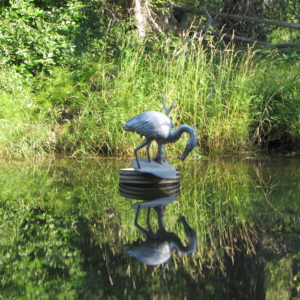
http://www.methowarts.org/river-twisp-ponds-discovery-center/
Cottonwood Trail
The Cottonwood Trail is located north of Twisp on the Old Twisp Highway. A 1-mile loop trail on the Methow River floodplain is a fragrant oasis of birdsong, river views and shady cottonwoods. Interpretive signs along the trail describe Methow history, and current efforts to restore plants, river-flows, and fish in the Methow Valley. The 38-acre educational park is part of the Watershed Watchers outdoor education program.
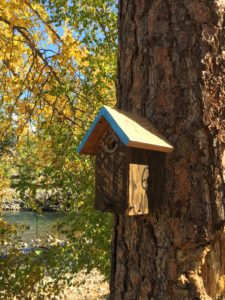
http://www.methowarts.org/river-cottonwood-trail/
Homestream Park – Opening October 13, 2019
Homestream Park honors the rivers, fish, and indigenous people who have lived here for thousands of years. Two pieces by native sculptor Virgil “Smoker” Marchand depict a life-size Methow Indian fish camp and two chinook salmon building a spawning redd.
Located on 2 acres of riverfront just downstream from the town of Winthrop, Homestream park will include an interpretive trail, sculptures, and a public gathering area with covered shelters, picnic tables, and a kid’s play fort. The land will be restored to its natural riparian and floodplain condition.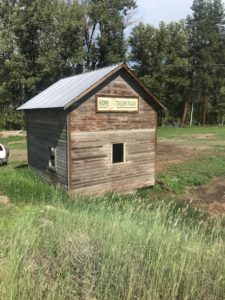
http://www.homestreampark.com/
Glacier Interpretive Loop Trail at Sun Mountain
This mile-long trail offers stunning views of the Methow Valley. Interpretive signs along the trail provide details about geology, flora, fauna, and landscapes carved by glacial activity.
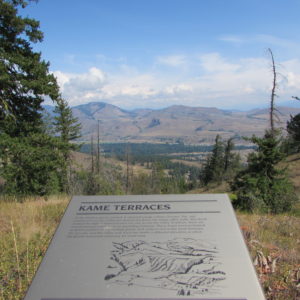
https://www.sunmountainlodge.com/sun-mountain/hiking/
Sa Teekh Wa Trail
Use the pedestrian cable suspension bridge at 110 Bluff Street in Winthrop to access the Sa Teekh Wa Park located across the Chewuch River, and to the right. A 2-mile interpretive trail is a pleasant stroll along a salmon spawning area. Interpretive signs commemorate the Methow’s first inhabitants, native plants and animals, and the Endangered Species Act’s role in the restoration of salmon to area rivers and streams.
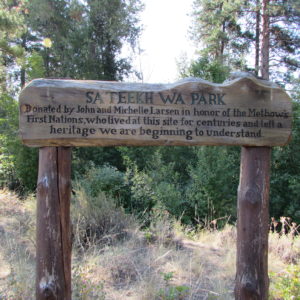
https://www.wta.org/go-hiking/hikes/sa-teekh-wa-trail
Early Winters Campground
Winters was a large permanent settlement that people continued to return to every year to fish, hunt, and gather fruits and vegetables. Interpretive signs at the campground and along the river trail introduce visitors to the multitude of fish that can be found in the Methow River.
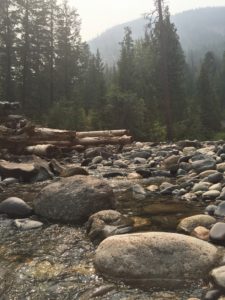
https://www.fs.usda.gov/recarea/okawen/recreation/recarea/?recid=59203
Washington Pass
“They are Watching” – The spires of Washington Pass tower above a popular trade route, marking the dividing line between the East and the West. The grand spires are pillars of spiritual belief for the Methow people. Like the great cathedrals in Europe, the surrounding peaks are honored as sacred places.
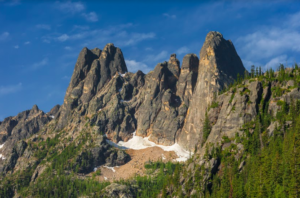
https://www.wta.org/go-hiking/hikes/washington-pass-overlook
